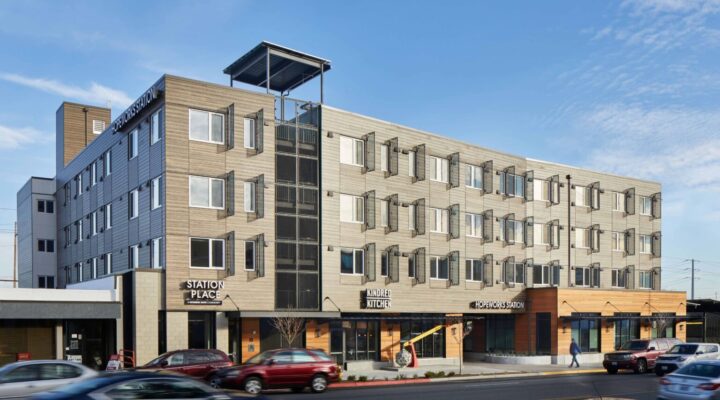The Hopeworks Station Place case study monitored the performance of multiple Sanden (CO2) HPWHs distributed throughout the top floor of a 65-unit multifamily building. The Sanden unit was designed for use in single family homes but was adapted for multifamily use in this project by using a distributed heat trace design. At HopeWorks Station, 13 hot water storage tanks are distributed around the fourth (top) floor with a corresponding Sanden HPWH above, on the rooftop. Each tank serves three to six apartment units.
This study focused on assessing the performance of a distributed CO2 heat pump water heating system using electric heat trace cable for temperature maintenance. This design is an alternative to the more typical central water heating plant with a recirculating loop for temperature maintenance. The theory tested is that a distributed water heating system would allow for significantly reduced distribution losses due to placing the water heaters closer to the source of demand. Furthermore, using heat trace cabling instead of a recirculating loop eliminates the required return piping; further reducing the heat loss from the distribution system.

